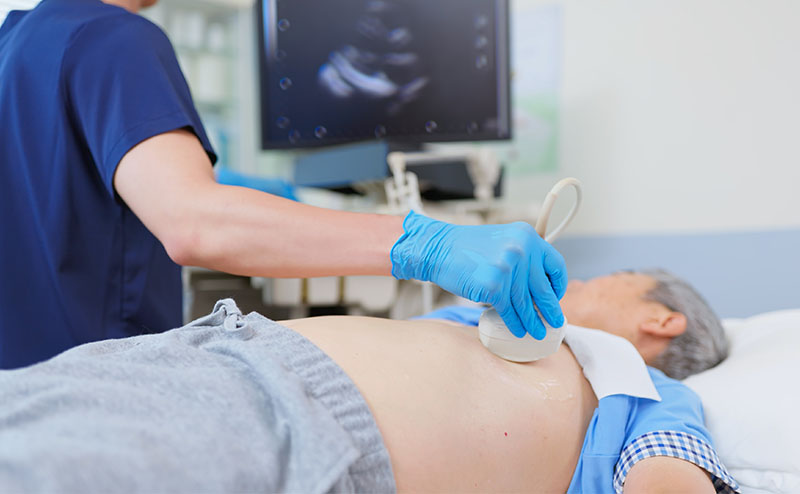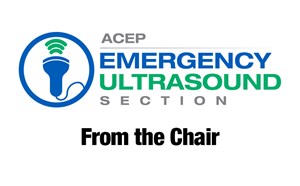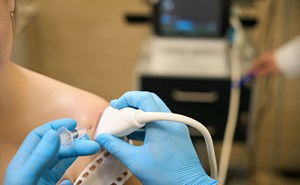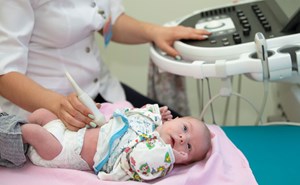
Literature Canon Update from the ACEP Ultrasound Fellowship Education Subcommittee: Aorta
Trent She, MD, FACEP
Hartford Hospital, University of Connecticut, no disclosures
Di Coneybeare, MD, MHPE
Columbia University Medical Center, Vagelos School of Physicians and Surgeons, no disclosures
Sandy Werner, MD, FPD-AEMUS, FACEP
MetroHealth Medical Center, Case Western Reserve University, no disclosures
Alexis Salerno, MD, FACEP
University of Maryland, School of Medicine, no disclosures
The subcommittee would like to acknowledge the following individuals for their contributions to this literature canon review: Lindsay Davis, Annette Mueller, Mark Scheatzle, Gabe Weingart, Judy Lin
The ACEP Ultrasound Section’s Fellowship Education Subcommittee continues to put together and expand on our Literature Canon of the need-to-know articles in point-of-care ultrasound.
For some more information on how the Literature Canon was born and how articles were selected, see this article here.
The following were the top 6 articles in Aorta as selected by the Fellowship Education Subcommittee (there was a tie for the 5th place article, so you get an extra article on us!).
Aorta Top 6 Articles
1. Fernando SM, Tran A, Cheng W, Rochwerg B, Strauss SA, Mutter E, et al. Accuracy of presenting symptoms, physical examination, and imaging for diagnosis of ruptured abdominal aortic aneurysm: Systematic review and meta‐analysis. Acad Emerg Med. 2022;29.4:486-96.
Summary: In this meta-analysis looking at patients with a ruptured abdominal aortic aneurysm (AAA): abdominal pain, back pain, syncope, hypotension and a pulsatile abdominal mass were poorly predictive symptoms of rupture. POCUS was highly sensitive and specific in detecting AAA, but the ability of POCUS to detect AAA rupture was not assessed.
This 2022 meta-analysis included 20 studies and 2077 patients with ruptured AAA. Of these patients:
-
- 1091 patients in 8 studies had abdominal pain which had a pooled sensitivity of 61.7%
- 1072 patients in 7 studies had back pain which had a pooled sensitivity of 53.6%
- 591 patients in 5 studies had syncope which had a pooled sensitivity of 27.8%
- 577 patients in 5 studies had hypotension which had a pooled sensitivity of 30.9%
- 894 patients in 6 studies had a pulsatile abdominal mass which had a pooled sensitivity of 47.1%
Computed tomography angiography had a sensitivity of 91.4% and a specificity of 93.6% for ruptured AAA (7 studies, 360 patients).
POCUS had a sensitivity of 97.8% and specificity of 97.0% for all AAA, ruptured or not (5 studies, 628 patients).
2. Jeeji AK, Ekstein SF, Ifelayo OI, Oyemade KA, Tawfic SS, Hyde RJ, et al. Increased body mass index is associated with decreased imaging quality of point‐of‐care abdominal aortic ultrasonography. J Clin Ultrasound. 2021;49(4):328-33.
Summary: In this retrospective single-center study, increasing body mass index (BMI) was associated with decreased image quality on point-of-care abdominal aortic ultrasound.
This 2020 retrospective single-center study of all patients who had a POCUS AAA ultrasound performed in a three-year period in a tertiary care ED with approximately 75,000 visits a year. Ultrasounds were performed by emergency medicine residents and attendings and were conducted with either a Sonosite Xporte, Sonosite S-FAST or Zonare ZS3 machine. Image quality was graded on a 1-5 Likert scale and considered insufficient for clinical use if the grade was 1 or 2 and sufficient for clinical use if the grade was 3-5. The most recent BMI within 6 months of the ultrasound scan date was used.
221 patients were in the final analysis. Average BMI was 27.4 (SD 6.2). As BMI increased, overall quality scores on abdominal POCUS decreased (correlation coefficient -0.24) but no significant difference was seen in the numbers of ultrasound that were sufficient and insufficient for clinical use.
3. Pare JR, Liu R, Moore CL, Sherban T, Kelleher Jr MS, Thomas S, et al. Emergency physician focused cardiac ultrasound improves diagnosis of ascending aortic dissection. Am J Emerg Med. 2016;34(3):486-492.
Summary: In this retrospective multihospital study of patients with acute aortic dissection (AAD), those that received a focused cardiac ultrasound (FOCUS) had faster disposition times and lower misdiagnosis rates than those who did not receive one.
This 2016 retrospective, 26-month, cohort study included 3 hospitals within the same hospital system - one hospital was a tertiary care academic hospital with 90,000 visits/year, one hospital was a small community-based freestanding ED with 30,000 visits/year and one hospital was a community ED with 70,000 visits/year. The three hospitals all had Epic for their electronic health record and Qpath as their image repository which were both queried for this study. Images were obtained with Philips Sparq ultrasound systems.
32 patients were in the final analysis, 16 who had a FOCUS and 16 who did not. The 16 patients that had a FOCUS had a faster time to diagnosis (80 min vs 226 min) and fewer missed dissections (0/16 vs 7/16). The patients that had a FOCUS also had a faster disposition time that was not statistically significant (134 min vs 205 min).
4. Tayal VS, Graf CD, Gibbs MA. Prospective study of accuracy and outcome of emergency ultrasound for abdominal aortic aneurysm over two years. Acad Emerg Med. 2003;10(8):867-71.
Summary: In this prospective study of patients presenting to the ED with suspected abdominal aortic aneurysm (AAA), POCUS conducted by emergency physicians had high sensitivity (100%) and specificity (98%) for the diagnosis of AAA.
This 2003 prospective, single-center observational study lasted 2 years looking at patients with suspected AAA presenting to the ED. POCUSs (POCUS) were performed by senior emergency medicine residents or physicians who had introductory lectures and at least 50 performed ultrasounds. Shimadzu 400 and 450 machines were used. All POCUS exams were confirmed by radiology ultrasounds, CTs, MRIs or laparotomy.
125 patients were in the final analysis with 29 positive for AAA and 96 negative on POCUS. 2 of the patients positive for AAA were found to be false-positives on subsequent CT; one case had a POCUS aortic measurement of 3.1cm with subsequent CT measuring the aorta at 2.8cm while one case had a POCUS aortic measurement of 3.1cm with subsequent CT mentioning a “normal caliber aorta”. 17 of the POCUS-positive group were admitted and considered for immediate operative intervention.
5. Nazerian P, Mueller C, Vanni S, de Matos Soeiro A, Leidel BA, Cerini G, et al. Integration of transthoracic focused cardiac ultrasound in the diagnostic algorithm for suspected acute aortic syndromes. European Heart J. 2019;40(24): 1952-60.
Summary: In this secondary analysis of an existing study, direct signs of acute aortic dissection (AAD) on POCUS were highly specific but not sensitive. Indirect signs of AAD on POCUS were less sensitive and specific. These POCUS signs may be beneficial in clinical workup of AAD in conjunction with other strategies.
This 2019 study was a planned secondary analysis of the ADvISED trial (Aortic Dissection Detection Risk Score Plus D-Dimer in Suspected Acute Aortic Dissection). The original trial was a prospective 26-month multinational study of five tertiary care centers enrolling patients with less than 2 weeks of chest/abdominal/back pain, syncope, and perfusion deficit with suspicion of AAD. The secondary analysis looked at the utility of POCUS in this workup of AAD.
POCUS was performed by a cardiologist or a non-cardiologist with at least 1 year of POCUS experience. MyLab 5, MyLab 30 Gold, MyLab Alpha, Philips HD7, GE Vivid S5 and S6 machines were used.
The following were considered as direct sonographic signs of AAD: presence of an intimal flap, presence of an intramural aortic haematoma, or presence of a penetrating aortic ulcer.
The following were considered as indirect sonographic signs of AAD: thoracic aorta dilatation (diameter ≥ 4 cm), pericardial effusion or tamponade, and aortic valve regurgitation on color Doppler.
The original study analyzed 1850 patients, of which 839 were included in this analysis because they underwent POCUS. 146 of these patients had AAD (17.4%). Direct signs of AAD were seen in 66 of these patients and had a sensitivity and specificity of 45.2% and 97.4%. Any sign of AAD (either direct or indirect) were seen in 130 of these patients and had a sensitivity and specificity of 89% and 74.5%.
The original study classified 671 patients as “low-risk”, of which 67 (10%) had AAD. A direct POCUS sign of AAD in this group was seen in 40 patients, which would significantly change clinical decision making.
The original study assessed the role of D-dimer in the diagnosis of AAD and found it to have a sensitivity of 96.7%. Adding a negative POCUS to the diagnostic workup may improve sensitivity of AAD diagnosis.
6. Rubano E, Mehta N, Caputo W, Paladino L, Sinert R. Systematic review: ED bedside ultrasonography for diagnosing suspected abdominal aortic aneurysm.” Acad Emerg Med. 2013;20(2):128-38.
Summary: In this meta-analysis, the test characteristics of emergency medicine ultrasound for diagnosis of abdominal aortic aneurysm (AAA) was extremely high with sensitivity of 99% and specificity of 98%.
This 2013 meta-analysis of 7 articles and 655 patients looked only at POCUSs performed by emergency physicians in patients that were suspected to have AAA. All studies had to have some comparison or confirmation of results. Although there was significant heterogeneity in terms of operator training and experience, the overall test characteristics for emergency physician POCUS were excellent with sensitivity of 99% and specificity of 98%.



